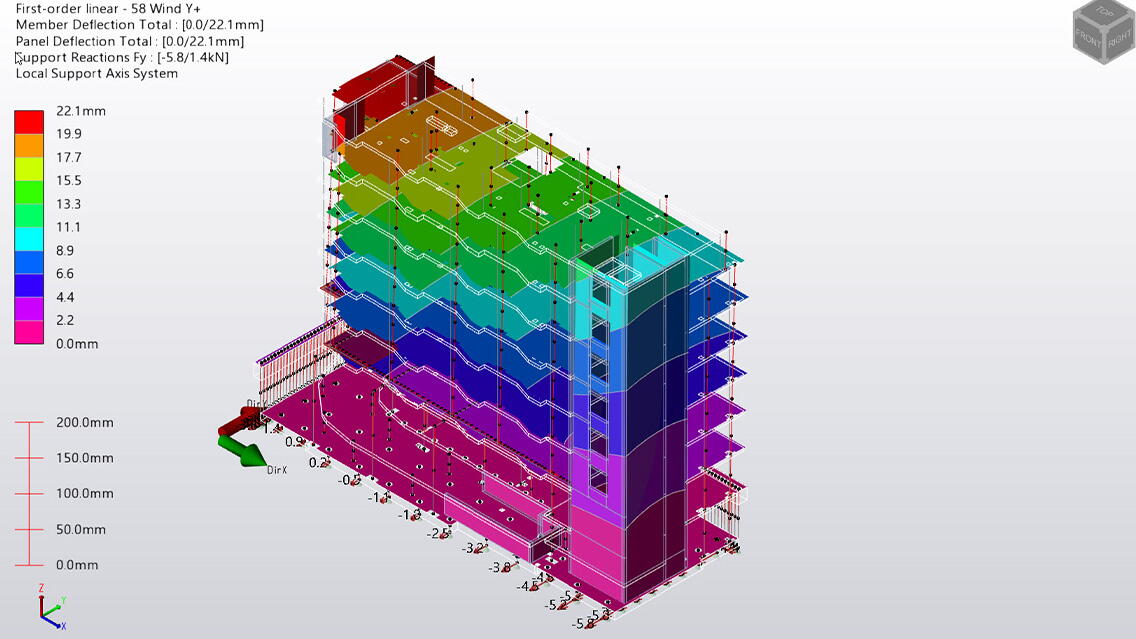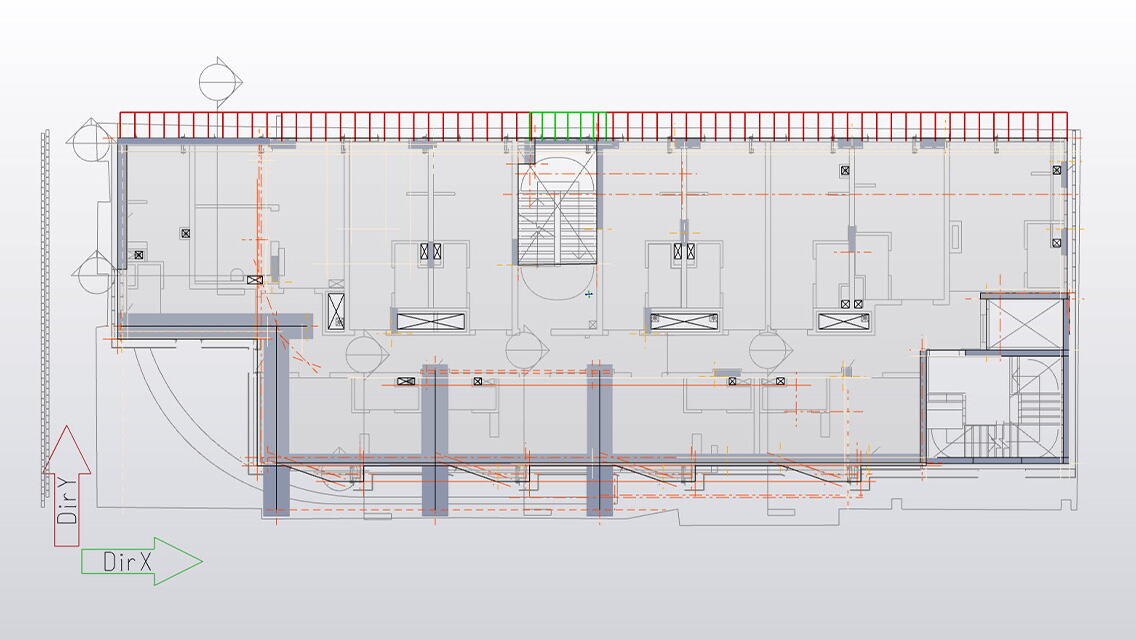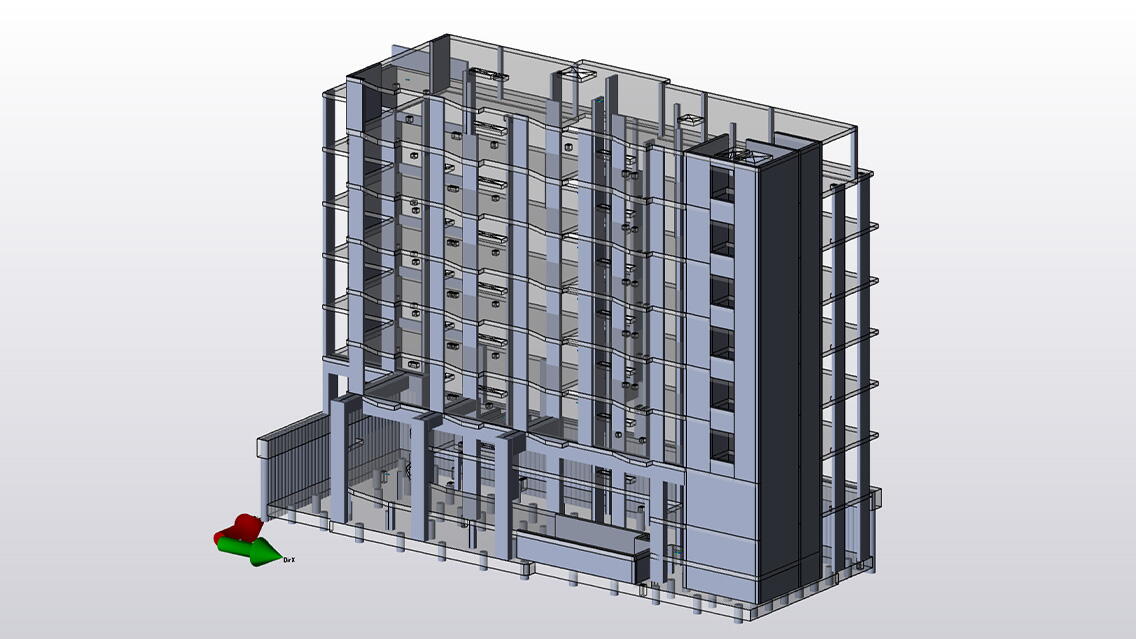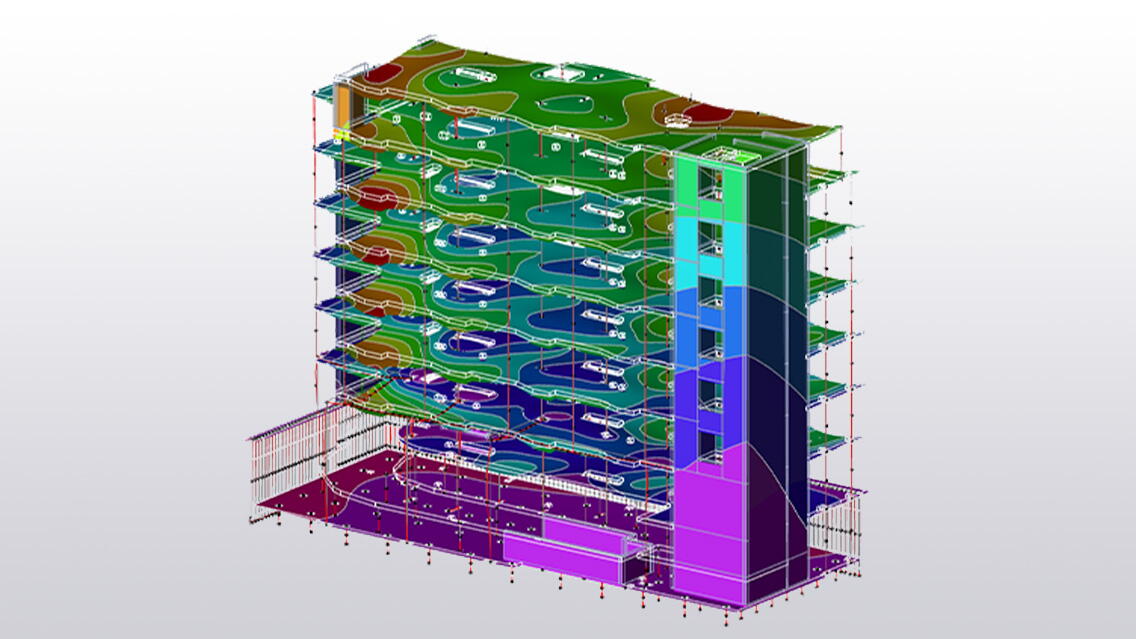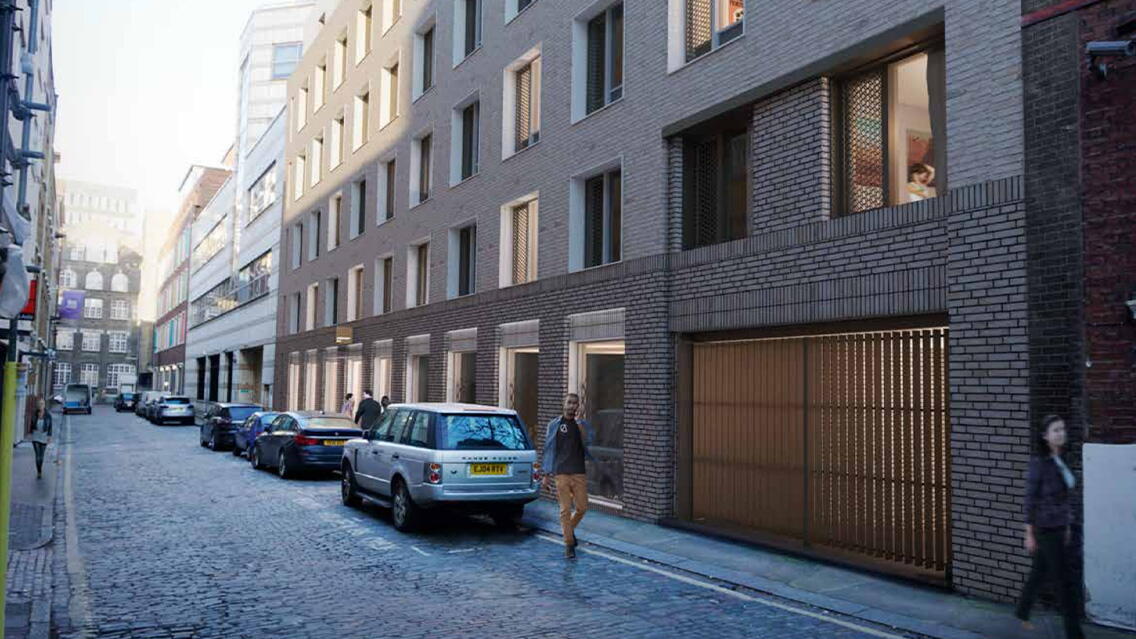The Stephenson Way project entailed the design and construction of a 72-unit, 8-storey student accommodation block near Euston Square tube station, featuring a single-storey basement. It is surrounded by existing multi-storey buildings of similar height.
There was an existing ramp on the site which currently provides access to the rear of one of the existing buildings which must be maintained in the proposed development. Additionally one of the adjacent buildings' flank walls was required to be propped by the proposed development.
Challenges and achievements
The project encountered two significant structural challenges: Firstly, a vehicular ramp was necessary to traverse the building from the basement to the ground, which was necessary to bridge over. Secondly, it faced complex party wall issues with neighbouring buildings close to the boundary line along three sides and a highway adjacent to the fourth side, all while accommodating a basement.
Using Tekla Structural Designer 2023, the Mason Navarro Pledge team devised a solution: large transfer beams at 1st floor were designed to span over the ramp. Additionally, a piled raft foundation allowed for the piles to be positioned away from the building outline and not undermine the neighbouring structure.
The basement was formed using retaining secant pile walls on 2 sides, one of which was adjacent to the existing highway. The asymmetry of the basement walls required the lateral load from the retained soil to go into the shear core and into the piled raft foundations.
Using Tekla software
- The architect gave CAD layouts of the floors, which were imported into Tekla Structural Designer. The structure was then modelled within Tekla Structural Designer to suit the architectural and structural design. Different structural geometry such as column positions, section sizes and slab depths were tested within the model, and the geometry exported to Revit using the Tekla Structural Designer BIM Integration tool. From this, structural drawings were produced and sent to the architect. Further rounds of coordination would commence following the same process.
- Design changes were communicated either in design team meetings and workshops, or by email. The architect then gave updated CAD layouts reflecting the discussed changes.
What does Mason Navarro Pledge Ltd say about the project?
“The biggest advantage of Tekla Structural Designer over other analysis software is the ability to create floorplans very easily and import architect's DXFs directly into the software to allow the accurate altering of model geometry without either; using a 3rd party software such as revit to first model the geometry to the architect's layout and importing that model into the analysis software; or painstakingly measuring out all the gridlines by hand and recreating the model from the architect's drawing.”
- Leo Corney, Structural Engineer at Mason Navarro Pledge Ltd
